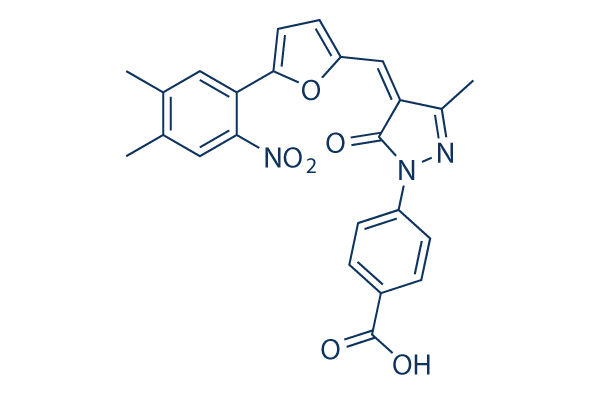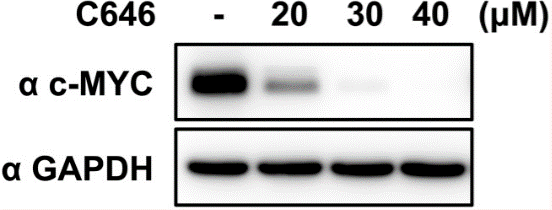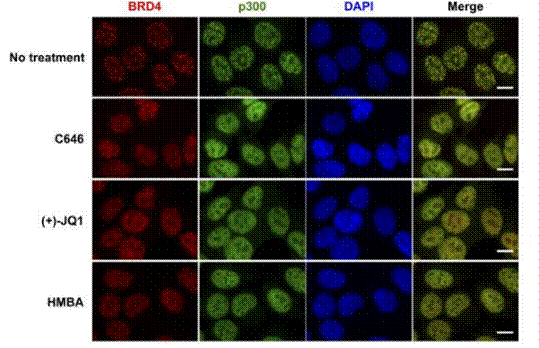
- Inhibitors
- By product type
- Natural Products
- Inducing Agents
- Peptides
- Antibiotics
- Antibody-drug Conjugates(ADC)
- PROTAC
- Hydrotropic Agents
- Dyes
- By Signaling Pathways
- PI3K/Akt/mTOR
- Epigenetics
- Methylation
- Immunology & Inflammation
- Protein Tyrosine Kinase
- Angiogenesis
- Apoptosis
- Autophagy
By research - Antibodies
- Compound Libraries
- Popular Compound Libraries
- Customize Library
- Clinical and FDA-approved Related
- Bioactive Compound Libraries
- Inhibitor Related
- Natural Product Related
- Metabolism Related
- Cell Death Related
- By Signaling Pathway
- By Disease
- Anti-infection and Antiviral Related
- Neuronal and Immunology Related
- Fragment and Covalent Related
- FDA-approved Drug Library
- FDA-approved & Passed Phase I Drug Library
- Preclinical/Clinical Compound Library
- Bioactive Compound Library-I
- Bioactive Compound Library-Ⅱ
- Kinase Inhibitor Library
- Express-Pick Library
- Natural Product Library
- Human Endogenous Metabolite Compound Library
- Alkaloid Compound LibraryNew
- Angiogenesis Related compound Library
- Anti-Aging Compound Library
- Anti-alzheimer Disease Compound Library
- Antibiotics compound Library
- Anti-cancer Compound Library
- Anti-cancer Compound Library-Ⅱ
- Anti-cancer Metabolism Compound Library
- Anti-Cardiovascular Disease Compound Library
- Anti-diabetic Compound Library
- Anti-infection Compound Library
- Antioxidant Compound Library
- Anti-parasitic Compound Library
- Antiviral Compound Library
- Apoptosis Compound Library
- Autophagy Compound Library
- Calcium Channel Blocker LibraryNew
- Cambridge Cancer Compound Library
- Carbohydrate Metabolism Compound LibraryNew
- Cell Cycle compound library
- CNS-Penetrant Compound Library
- Covalent Inhibitor Library
- Cytokine Inhibitor LibraryNew
- Cytoskeletal Signaling Pathway Compound Library
- DNA Damage/DNA Repair compound Library
- Drug-like Compound Library
- Endoplasmic Reticulum Stress Compound Library
- Epigenetics Compound Library
- Exosome Secretion Related Compound LibraryNew
- FDA-approved Anticancer Drug LibraryNew
- Ferroptosis Compound Library
- Flavonoid Compound Library
- Fragment Library
- Glutamine Metabolism Compound Library
- Glycolysis Compound Library
- GPCR Compound Library
- Gut Microbial Metabolite Library
- HIF-1 Signaling Pathway Compound Library
- Highly Selective Inhibitor Library
- Histone modification compound library
- HTS Library for Drug Discovery
- Human Hormone Related Compound LibraryNew
- Human Transcription Factor Compound LibraryNew
- Immunology/Inflammation Compound Library
- Inhibitor Library
- Ion Channel Ligand Library
- JAK/STAT compound library
- Lipid Metabolism Compound LibraryNew
- Macrocyclic Compound Library
- MAPK Inhibitor Library
- Medicine Food Homology Compound Library
- Metabolism Compound Library
- Methylation Compound Library
- Mouse Metabolite Compound LibraryNew
- Natural Organic Compound Library
- Neuronal Signaling Compound Library
- NF-κB Signaling Compound Library
- Nucleoside Analogue Library
- Obesity Compound Library
- Oxidative Stress Compound LibraryNew
- Plant Extract Library
- Phenotypic Screening Library
- PI3K/Akt Inhibitor Library
- Protease Inhibitor Library
- Protein-protein Interaction Inhibitor Library
- Pyroptosis Compound Library
- Small Molecule Immuno-Oncology Compound Library
- Mitochondria-Targeted Compound LibraryNew
- Stem Cell Differentiation Compound LibraryNew
- Stem Cell Signaling Compound Library
- Natural Phenol Compound LibraryNew
- Natural Terpenoid Compound LibraryNew
- TGF-beta/Smad compound library
- Traditional Chinese Medicine Library
- Tyrosine Kinase Inhibitor Library
- Ubiquitination Compound Library
-
Cherry Picking
You can personalize your library with chemicals from within Selleck's inventory. Build the right library for your research endeavors by choosing from compounds in all of our available libraries.
Please contact us at info@selleckchem.com to customize your library.
You could select:
- Bioreagents
- qPCR
- 2x SYBR Green qPCR Master Mix
- 2x SYBR Green qPCR Master Mix(Low ROX)
- 2x SYBR Green qPCR Master Mix(High ROX)
- Protein Assay
- Protein A/G Magnetic Beads for IP
- Anti-Flag magnetic beads
- Anti-Flag Affinity Gel
- Anti-Myc magnetic beads
- Anti-HA magnetic beads
- Poly DYKDDDDK Tag Peptide lyophilized powder
- Protease Inhibitor Cocktail
- Protease Inhibitor Cocktail (EDTA-Free, 100X in DMSO)
- Phosphatase Inhibitor Cocktail (2 Tubes, 100X)
- Cell Biology
- Cell Counting Kit-8 (CCK-8)
- Animal Experiment
- Mouse Direct PCR Kit (For Genotyping)
- Featured Products
- MRTX1133
- Nab-Paclitaxel
- KP-457
- IAG933
- RMC-6236 (Daraxonrasib)
- RMC-7977
- Zoldonrasib (RMC-9805)
- GsMTx4
- Navitoclax (ABT-263)
- TSA (Trichostatin A)
- Y-27632 Dihydrochloride
- SB431542
- SB202190
- MK-2206 Dihydrochloride
- LY294002
- Alisertib (MLN8237)
- XAV-939
- CHIR-99021 (Laduviglusib)
- Bafilomycin A1 (Baf-A1)
- Thiazovivin (TZV)
- CP-673451
- Verteporfin
- DAPT
- Galunisertib (LY2157299)
- MG132
- SBE-β-CD
- Tween 80
- Bavdegalutamide (ARV-110)
- Z-VAD-FMK
- Wnt-C59 (C59)
- IWR-1-endo
- (+)-JQ1
- 3-Deazaneplanocin A (DZNep) Hydrochloride
- RepSox (E-616452)
- Erastin
- Q-VD-Oph
- Puromycin Dihydrochloride
- Cycloheximide
- Telaglenastat (CB-839)
- A-83-01
- Ceralasertib (AZD6738)
- Liproxstatin-1
- Emricasan (IDN-6556)
- PMA (Phorbol 12-myristate 13-acetate)
- Dibutyryl cAMP (Bucladesine) sodium
- Nedisertib (M3814)
- PLX5622
- IKE (Imidazole Ketone Erastin)
- STM2457
- Saruparib (AZD5305)
- New Products
- Contact Us
research use only
C646 Histone Acetyltransferase p300 Inhibitor
Cat.No.S7152

Chemical Structure
Molecular Weight: 445.42
Quality Control
Batch:
Purity:
99.77%
99.77
Cell Culture, Treatment & Working Concentration
| Cell Lines | Assay Type | Concentration | Incubation Time | Formulation | Activity Description | PMID |
|---|---|---|---|---|---|---|
| NE-4C cells | Function assay | 0-5 μM | high glucose induced increases of H4K5ac and H4K5/8/12/16ac levels in NE-4C cells are inhibited by addition of a selective CBP/p300 inhibitor C646 in a dose-dependent way (from 0 to 5 μM) | 30114346 | ||
| SH-SY5Y | Function assay | 20 μM | 24 h | Co-treatment with 20 µM C646 suppressed the effect of TSA treatment on Alox15 mRNA expression by 65.7% | 29235036 | |
| GES-1 | Function assay | 10 μM | 6 h | C646 treatment significantly reduced the levels of histone H3 acetylation in both GC cells and normal gastric epithelial cells (P<0.05) | 29075795 | |
| SGC-7901 | Function assay | 10 μM | 6 h | C646 treatment significantly reduced the levels of histone H3 acetylation in both GC cells and normal gastric epithelial cells (P<0.05) | 29075795 | |
| MKN45 | Function assay | 10 μM | 6 h | C646 treatment significantly reduced the levels of histone H3 acetylation in both GC cells and normal gastric epithelial cells (P<0.05) | 29075795 | |
| MGC-803 | Function assay | 10 μM | 6 h | C646 treatment significantly reduced the levels of histone H3 acetylation in both GC cells and normal gastric epithelial cells (P<0.05) | 29075795 | |
| BGC-823 | Function assay | 10 μM | 6 h | C646 treatment significantly reduced the levels of histone H3 acetylation in both GC cells and normal gastric epithelial cells (P<0.05) | 29075795 | |
| KATO III | Function assay | 10 μM | 6 h | C646 treatment significantly reduced the levels of histone H3 acetylation in both GC cells and normal gastric epithelial cells (P<0.05) | 29075795 | |
| Raw246.7 | Function assay | 1, 5, 10, 15, 20, 25, or 30 μM | 16 h | results in significant inhibition of LPS and IFNγ induced NF-κB promoter activity at 15 μM or higher concentrations | 26718586 | |
| WM35 | Function assay | 10 μM and 20 μM | 24 h | a dose-dependent decrease in the protein levels of cyclins A and E, accompanied by an increased expression of p53 and its downstream effector p21 | 23698071 | |
| 1205Lu | Function assay | 10 μM and 20 μM | 24 h | a dose-dependent decrease in the protein levels of cyclins A and E, accompanied by an increased expression of p53 and its downstream effector p21 | 23698071 | |
| WM983B | Function assay | 10 μM and 20 μM | 24 h | a dose-dependent decrease in the protein levels of cyclins A and E, accompanied by an increased expression of p53 and its downstream effector p21 | 23698071 | |
| Kasumi-1 | Growth inhibition assay | 10, 25 and 50 μM | 0, 24, 48, 72 h | cellular growth and colony formation were dramatically suppressed upon C646 treatment. | 23390536 | |
| SKNO-1 | Growth inhibition assay | 10, 25 and 50 μM | 0, 24, 48, 72 h | cellular growth and colony formation were dramatically suppressed upon C646 treatment. | 23390536 | |
| BL21(RIL)-DE3 | Function assay | 10 mins | Inhibition of synthetic VMA-tagged p300 (1287 to 1652 residues) (unknown origin) expressed in Escherichia coli BL21(RIL)-DE3 cells using H4-15 peptide substrate incubated for 10 mins by radiometric filter binding assay in presence of [14C]acetyl-CoA, Ki = 0.4 μM. | 26701186 | ||
| BL21(RIL)-DE3 | Function assay | 10 mins | Inhibition of synthetic VMA-tagged p300 (1287 to 1652 residues) (unknown origin) expressed in Escherichia coli BL21(RIL)-DE3 cells using H4-15 peptide substrate incubated for 10 mins by radiometric filter binding assay in presence of [14C]acetyl-CoA, IC50 = 1.6 μM. | 26701186 | ||
| BL21-CodonPlus(DE3)-RIL | Function assay | 10 mins | Inhibition of FLAG-tagged p300 (1195 to 1673 residues) (unknown origin) expressed in competent Escherichia coli BL21-CodonPlus(DE3)-RIL cells using histone H4 substrate incubated for 10 mins by scintillation counting method in presence of [14C]acetyl-CoA, IC50 = 9 μM. | 26701186 | ||
| Click to View More Cell Line Experimental Data | ||||||
Chemical Information, Storage & Stability
| Molecular Weight | 445.42 | Formula | C24H19N3O6 |
Storage (From the date of receipt) | |
|---|---|---|---|---|---|
| CAS No. | 328968-36-1 | Download SDF | Storage of Stock Solutions |
|
|
| Synonyms | N/A | Smiles | CC1=CC(=C(C=C1C)[N+](=O)[O-])C2=CC=C(O2)C=C3C(=NN(C3=O)C4=CC=C(C=C4)C(=O)O)C | ||
Solubility
|
In vitro |
DMSO
: 11 mg/mL
(24.69 mM)
Water : Insoluble Ethanol : Insoluble |
Molarity Calculator
|
In vivo |
|||||
In vivo Formulation Calculator (Clear solution)
Step 1: Enter information below (Recommended: An additional animal making an allowance for loss during the experiment)
mg/kg
g
μL
Step 2: Enter the in vivo formulation (This is only the calculator, not formulation. Please contact us first if there is no in vivo formulation at the solubility Section.)
%
DMSO
%
%
Tween 80
%
ddH2O
%
DMSO
+
%
Calculation results:
Working concentration: mg/ml;
Method for preparing DMSO master liquid: mg drug pre-dissolved in μL DMSO ( Master liquid concentration mg/mL, Please contact us first if the concentration exceeds the DMSO solubility of the batch of drug. )
Method for preparing in vivo formulation: Take μL DMSO master liquid, next addμL PEG300, mix and clarify, next addμL Tween 80, mix and clarify, next add μL ddH2O, mix and clarify.
Method for preparing in vivo formulation: Take μL DMSO master liquid, next add μL Corn oil, mix and clarify.
Note: 1. Please make sure the liquid is clear before adding the next solvent.
2. Be sure to add the solvent(s) in order. You must ensure that the solution obtained, in the previous addition, is a clear solution before proceeding to add the next solvent. Physical methods such
as vortex, ultrasound or hot water bath can be used to aid dissolving.
Mechanism of Action
| Features |
Extensively used as a pharmacologic probe in cancer cells. Potential use for prostate and lung cancers.
|
|---|---|
| Targets/IC50/Ki |
p300/CBP [1]
(Cell-free assay) 400 nM(Ki)
|
| In vitro |
C646 is an inhibitor for histone acetyltransferase, inhibits p300 with a Ki of 400 nM and is selective versus other acetyltransferases. This compound produces 86% inhibition of p300 in vitro at 10 μM. It is a classical reversible p300 inhibitor. This chemical treatment (25μM) reduces histone H3 and H4 acetylation levels and abrogates TSA-induced acetylation in cells. [1] It (20μM) induces apoptosis in androgen-sensitive and castration-resistant prostate cancer cell lines by interfering with AR and NF-kB pathways. [2] This compound blocks dynamic acetylation of H3K4me3 globally in mouse and fly cells, and locally across the promoter and start-site of inducible genes in the mouse, thereby disrupting RNA polymerase II association and the activation of these genes. [3]
|
| Kinase Assay |
Radioactive assay
|
|
IC50 values for the putative p300 HAT inhibitors are determined using the direct radioactive assay described above. Reactions are performed in 20 mM HEPES (pH 7.9), and contained 5 mM DTT, 80μM EDTA, 40μg/ml BSA, 100μM H4-15, and 5 nM p300. Putative inhibitors are added over a range of concentrations, with DMSO concentration kept constant (<5%). Reactions are incubated at 30°C for 10 min, then initiated with addition of a 1:1 mixture of 12C-acetyl-CoA and 14C-acetyl-CoA to 20 mM. After 10 min at 30°C, reactions are quenched with 14% SDS (w/v). All concentrations are screened in duplicate. Gels are run, washed, dried, and exposed to a PhosphorImager plate, and production of Ac-H4-15 quantified to obtain IC50s.
|
|
| In vivo | References |
|
Applications
| Methods | Biomarkers | Images | PMID |
|---|---|---|---|
| Western blot | α-c-Myc Cyclin A1/2 / Cyclin E2 / p53 / p21 H3K27Ac |

|
28630312 |
| Immunofluorescence | BRD4 / p300 |

|
28630312 |
Tech Support
Tel: +1-832-582-8158 Ext:3
If you have any other enquiries, please leave a message.
Frequently Asked Questions
Question 1:
I am planning to conduct IP studies in mice with it, any specific vehicle that you can recommend to me?
Answer:
It can be dissolved in 5% DMSO+30% PEG 300+ddH2O at 1 mg/ml as a clear solution, and should be ok for i.p. injection.






































